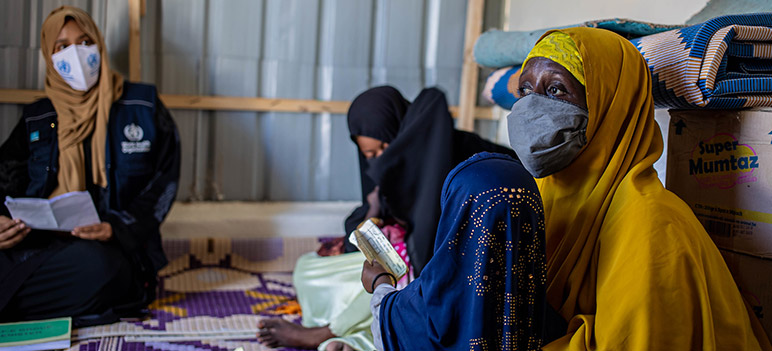
How do people get infected with COVID-19?
The COVID-19 virus is transmitted mainly between people via respiratory droplets and this occurs when a person is in close contact (within 1 metre) with an infected person and exposure to potentially infective respiratory droplets occurs, for example, through coughing or sneezing.
Transmission can also occur indirectly by contact with surfaces in the immediate environment or with objects used on or by the infected person.
Are only people who have symptoms infectious?
COVID-19 infection mainly occurs from people when they have symptoms. It can also occur just before patients develop symptoms (pre-symptomatic) or from people not showing any symptoms (asymptomatic).
Why should I wear a mask?
Wearing a mask protects us by reducing the chance of disease transmission from sick, pre-symptomatic and asymptomatic infected persons to others.
When should I wear a mask?
Masks should be worn in places where there is limited opportunity for physical distancing, or places with poor ventilation and little air flow. This applies to social and mass gatherings, public transportation, offices, grocery stores, schools, mosques, and churches and other places.
What kind of mask should I wear?
The public should wear fabric masks.
The following groups should wear medical (surgical) masks
Health workers
People who have tested positive for COVID-19
Anyone suspected to have COVID-19,
People caring for suspected or confirmed cases of COVID-19 outside of health facilities
Elderly people above 60 years of age
People with immunocompromised disorders
Will wearing a mask protect me from COVID-19?
Wearing a mask can reduce the possibility of disease transmission and can help protect the community. But the use of a mask alone is not enough to protect you from COVID-19. It can only protect you when worn along with other preventative actions, including:
washing your hands well
covering your mouth when coughing or sneezing
keeping a safe distance from other people
monitoring your symptoms and self-isolating for if you think you may be infected
opening windows and doors in closed spaces as much as possible to improve airflow and ventilation
What if I am wearing a mask in a crowded place and others are not, am I protected in this situation?
Fabric masks act as a barrier to prevent an infected person from spreading the infection onwards and further. If an infected person is not wearing a mask, the risk of infection to others, even to those wearing masks, exists. If everyone wears a cloth mask, we are all protected.
How do I put on, use, take off and dispose of a mask safely?
- Clean your hands well before putting on your mask.
- Put on your mask carefully, ensuring it covers the mouth and nose, adjust it to the nose bridge, and tie it securely to minimize any gaps between the face and the mask.
- avoid touching you mask while wearing it
- Remove the mask by untying it from the back or from the ear straps. Do not touch the front of the mask as it may be contaminated.
- After removing your mask, or if you accidentally touch the front of the mask, clean your hands with an alcohol-based hand rub, or soap and water if they are visibly dirty.
- If your fabric mask becomes damp, replace it with a new, clean, and dry mask. Do not re-use single-use masks.
- Discard single-use masks after each use and dispose of them immediately upon removal in a safe disposal container.
- Wash your reusable fabric mask regularly.
Can wearing a mask have disadvantages?
Yes, mask use can have some disadvantages. Self-contamination can occur if people keep touching the outer surface of a mask with their hands and then touch their face. If non-medical masks are not changed when wet or soiled, this can create favorable conditions for breeding of micro-organisms.
Masks can also provide a false sense of security, leading to potentially lower adherence to other critical preventative measures. People with special needs may also have difficulties wearing masks. Sometimes, mask wearing might lead to potential breathing difficulties, headache, skin lesions, or discomfort.








